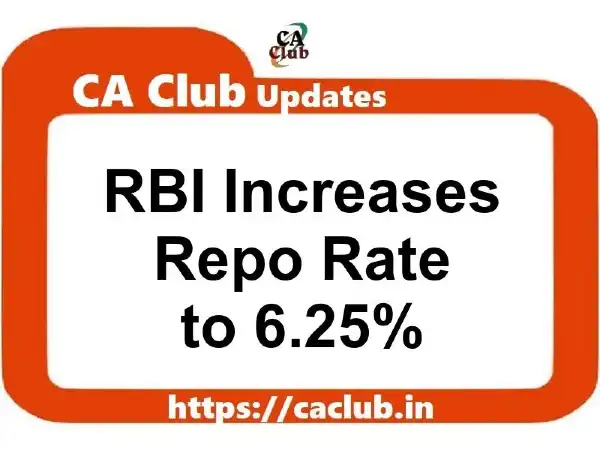As stated by the RBI Governor today in the Monetary Policy Statement, the Reserve Bank of India (RBI) increased the repo rate by 0.35 percent basis points, raising it to 6.25 percent, for the fifth consecutive time.
According to the Monetary Policy Committee (MPC) of the RBI, additional, calibrated monetary policy action is required to anchor inflation expectations, end core inflation’s persistence, and control second-round effects. In the medium term, these actions will improve the growth prospects for the Indian economy.
Accordingly, the MPC of the RBI has decided to raise the repo rate by 0.35 percentage points, making it 6.25 percent, effective right away. The repo rate has increased by 2.25 percentage points by the RBI since May 2022.
As a result of this development, the marginal standing facility and standing deposit facility rates have been adjusted to 6.50 percent and 6.0 percent, respectively. With immediate effect, the Bank Rate is increased by 35 basis points, moving from 6.15 to 6.50 percent. The Bank Rate is specifically linked to all penal interest rates on shortfalls in reserve requirements, and these rates have all been updated to reflect this.
The governor cited continued pessimism about the global economy as the justification for the interest rate hike. The prospect of a recession is becoming more and more worrying as tougher financial conditions persist. Unacceptably high inflation persists worldwide.
Therefore, banks will likely increase the interest rates they charge on borrowers’ loans, including personal loans, mortgage loans, and other credit facilities, to compensate for the higher costs they will incur as a result of the higher repo rate. Those who have mortgages with variable interest rates will suffer the most from this shift.
As another year comes to a close, the global economy remains shook by profound shocks and unprecedented uncertainty. Geopolitics and market volatility send contradictory messages. As the COVID-19 pandemic was nearing its end in 2022, the Ukraine war erupted in a black swan event that altered the global economy. Food and energy price increases, as well as staple shortages, have harmed the world’s poor. Despite a reduction in international food, energy, and other commodity prices, inflation remains high and widespread. According to the IMF, more than one-third of the global economy will contract this year or next. Large shocks have disproportionately harmed emerging market economies (EMEs), particularly those dependent on food, energy, and commodity imports.
Aside from the pandemic and war, trade, finance, and technology are all fragmenting. Geopolitical security is driving supply chain “reshoring” and “friend-shoring.” The most pressing global issues are food, energy, and climate change.
In this hostile international environment, macroeconomic fundamentals keep the Indian economy strong. Our economy is robust. Banks and corporations are stronger post-crisis. Eight months of double-digit growth in bank credit. In a dark world, India is a bright light. Our inflation is high, as it is elsewhere. Global spillovers continue to be volatile and uncertain.
